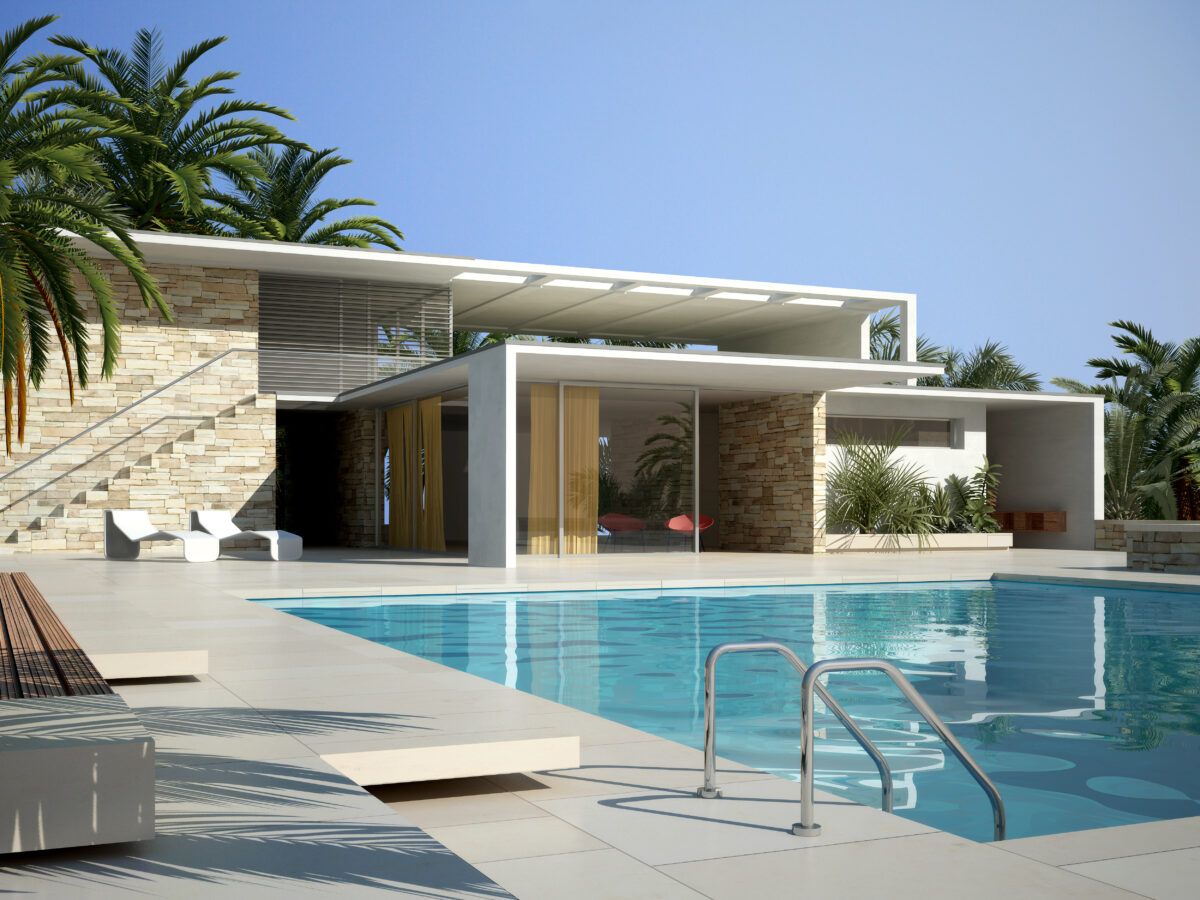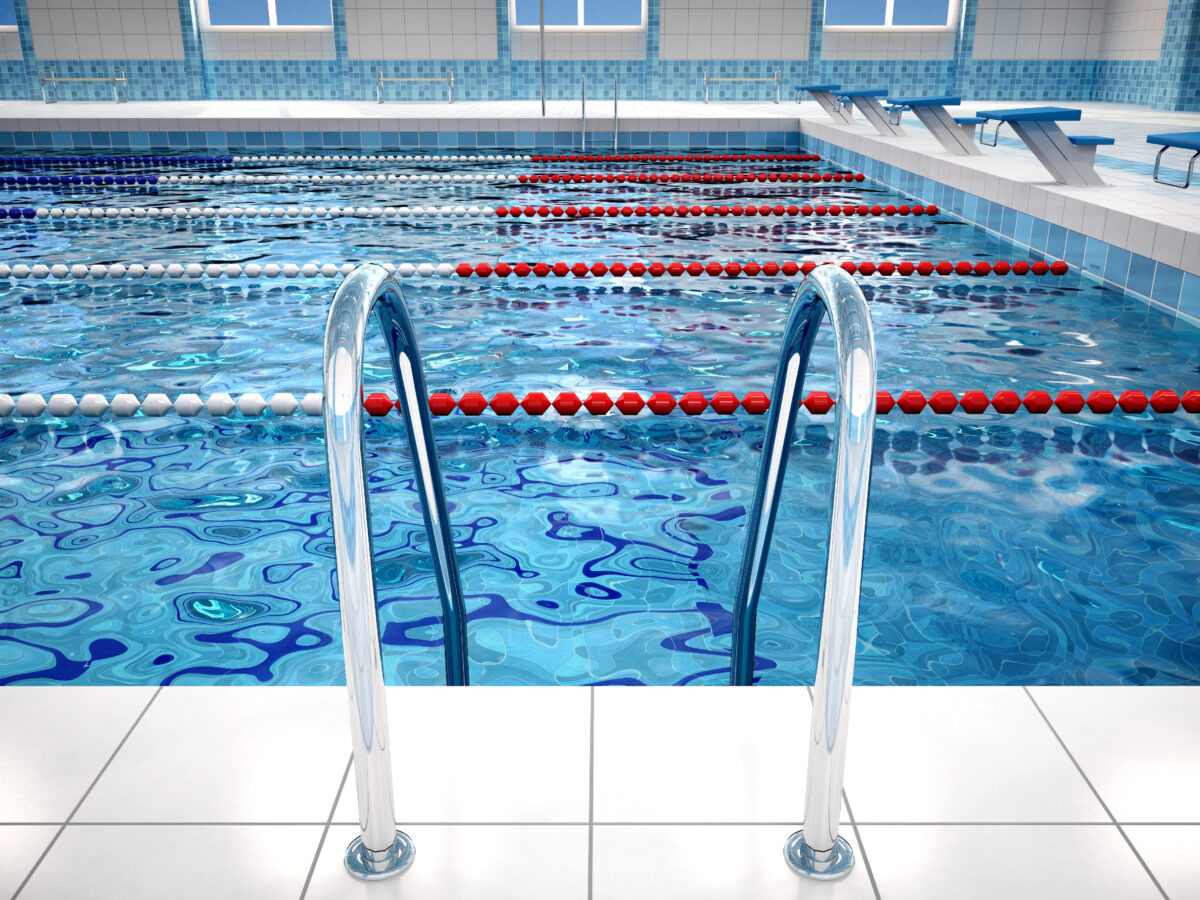DISINFECTION WITH CHLORINE
Chlorine is the most widely used disinfectant. It has both a disinfectant and germicidal action.
Based on these characteristics, it is recommended to use chlorine as the only means for disinfecting swimming pools used at commercial level.
The chlorine content of the pool water must be between 0.3 mg/l and 1 mg/l of pure chlorine.
This value is sufficient for perfectly hygienic water. The prerequisite is a pH value between 7.0 and 7.4.
For private use of the pool, three groups of products are used, with the following chemical / technical characteristics:
It is inorganic and liquid with an active chlorine content between 13 and 14%, which is introduced through a metering pump.
Based on the high pH value and the high quantity applied, the influence on the pH value of the pool water is extremely high.
The chloride content of about 140 g/l generates an enrichment of the chloride in the water, therefore it is necessary to pay attention to the fact that the chloride content does not exceed 150 ml/l, since as this value increases, it also increases the danger of corrosion of the steel parts of the system. By adequately adding clean water, the chlorine content can be reduced.
It is a chlorine-based organic solid product in the form of granules or tablets, with an active chlorine content of at least 70%. Dissolved in water, it releases hypochlorous acid and calcium hydrate.
Based on its chemical composition, the product is not completely soluble without leaving residues.
Therefore, it should not be poured directly into the tub (it would generate discoloration spots on any film coating. To overcome this drawback, the granulate is introduced through the filter).
In public swimming pools, specific dosers called Granudos are used, which mix calcium hypochlorite with sulfuric acid to optimize the pH value, within the established ranges.
The granulate has several advantages:
- Stability over time (as opposed to sodium hypochlorite in solution where the chlorine content decreases over time). The guarantee of always having a product with 70% active chlorine.
- With calcium hypochlorite, the pH value of the pool water rises only marginally unlike sodium hypochlorite which, by containing soda, raises the pH of the water and requires a greater amount of acid to bring the pH to optimal values of 7.3-7.5.
- Possibility of shock treatments or super chlorination if it is necessary to make a clarification of the water in a short time.
- Containment of the chlorate content

It is an organic product based on chlorine, soluble quickly and without residues, with an active content between 56 and 63%.
Based on its behavior in solubility, it is particularly suitable for shock chlorination.
The pH value is not affected by the addition of this product, however, it should be checked regularly.
It is an organic product based on chlorine, slowly soluble and therefore suitable for maintenance chlorination, with an active content between 75 and 88%.
Compared to other active chlorine-based substances, such as sodium or calcium hypochlorite, chloroisocyanurates have some chemical characteristics that have led to their increasing use in recent years, to the point of becoming the most common chlorinating agents today. The reason for this success lies in the fact that, in addition to releasing the hypochlorous acid responsible for the germicidal action, the chloroisocyanurates also release a certain amount of cyanuric acid, a highly stabilizing agent against hypochlorous acid. It is well known, in fact, that the latter decomposes very quickly due to the effect of ultraviolet rays and high temperatures. The problem is obviously more felt in the central hours of the hot and sunny summer days, just when the frequency of bathers is greater. In such conditions, products such as hypochlorites are consumed very quickly, with consequent need for continuous replenishment. The Cyanuric Acid that derives from the decomposition of Chloroisocyanurates slows down the decomposition process very efficiently, allowing both to obtain medium-long term savings on management costs, and to have a pool always with the right concentration of active chlorine, even in the most critical hours.
The product is a slow dissolving tablet also containing flocculating elements and an algaecide principle. The active chlorine content amounts to approximately 75%. This offers the advantage that it can be used by inserting a sand filter system or in the skimmer.
Bromine is an oxidant like chlorine, which having a greater atomic weight requires a much higher concentration in the pool water but has the same disinfectant action with the advantage of being odourless and not irritating the eyes and skin. The product is circulated by means of a dispenser.
Interested?
Click directly on the product name to receive a quote or contact us:
